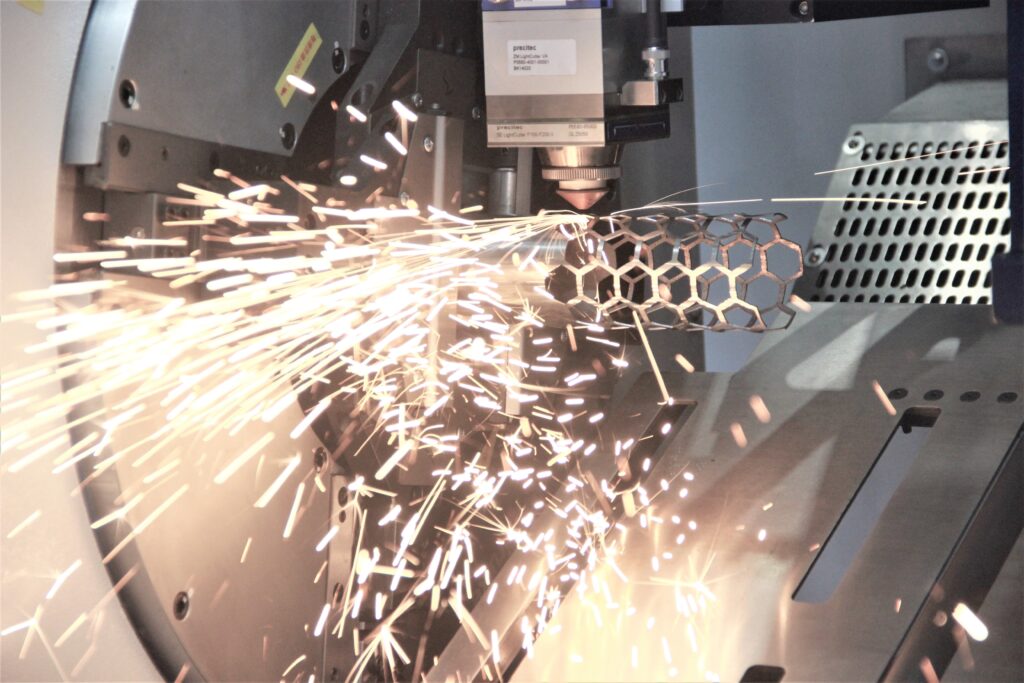Why choose a FIBER LASER cutting machine?
- to increase metal cutting speed and accuracy
- to achieve better results even when cutting brass and copper
- to cut operating costs.
What about the concrete results? Higher production and higher profitability. Not bad!
Make the good decision
Switching to fiber laser technology is a good choice to increase metal cutting speed and reduce operating costs. They also cut with greater precision and power in thin to medium materials and are more suitable for cutting reflective or non-ferrous metals such as brass and copper. All these factors result in a more productive and more profitable business.
Before the investment, consider the technical, operational and financial implications that a fiber laser will have on your production facility.
A few elements to consider
What will a fiber laser replace in your current workshop?
Depending on the current configuration of your facility, a fiber laser can replace several machines (think for example the shear and punch press). If one fiber laser replaces several machines it can mean a substantial reduction in maintenance and operating costs over time.
Which are the operational costs to run a fiber laser machine?
Fiber lasers cost much less than CO2 lasers and are much more efficient, costing up to 50% less to operate. Solid-state resonators are simpler, without moving parts and they directly provide the beam to the cutting head. This significantly reduces maintenance and service costs. They also have a higher electrical efficiency, which means that much less money on energy consumption.
Who is the machine tool manufacturer and has a local presence?
Research the manufacturers for the fiber lasers you are considering.
Many manufacturers instinctively choose well-known brands, but there are also advantages in choosing other brand names and typically the rapid technical service and the supply of spareparts should be considered.
What is the type and make of the resonator?
Not all fiber lasers are the same. Many machine tool manufacturers use IPG resonators, but some larger manufacturers have their own versions. Compare the repair costs and regular maintenance needs for each and how this could affect your workflow and budget.
Which automations are required for your job?
Automation is no longer an unnecessary consideration. This is especially true when you consider the cutting speeds of fiber lasers. In some cases fiber lasers cut parts so quickly that operators are not able to load the new material fast enough. Have a look at the fast exchange table of Hymson series G.
How much power do I need?
Fiber technology is constantly evolving. One of the most exciting things in this new era of metal fabrication is that fiber lasers have almost no power limit! All new developments are in the race to deliver more power and more power means more productivity. Increased power dramatically reduces cutting time – and not just for thin materials.
When you choose a fiber laser think about what your business really needs. Think about what you need your machines to do for you – including levels of functionality and productivity – and what impact a fiber machine will have in your production flow when it comes to machinings and, of course, your bottom line.

 Italiano
Italiano
